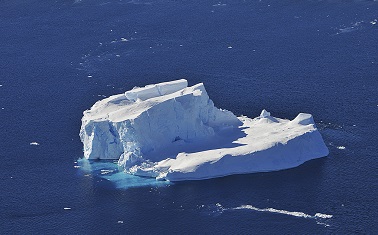By Ilissa Ocko
(This post originally appeared on EDF Voices)
An ice berg drifts off a West Antarctica glacier — Courtesy NASA
As 2014 draws to a close, two recent developments show that global temperatures are rising at an alarming rate. The world, it seems, is on a run-away train – and yet, we have more reason to feel hopeful than we did a year ago.
I’ll explain why that is. But first, let’s have a look at where we are right now.
West Antarctica ice sheet loss is accelerating
The latest science shows that ice loss from West Antarctica has been increasing nearly three times faster in the past decade than during the previous one – and much quicker than scientists predicted.
This unprecedented ice loss is found to be occurring because warm ocean water is rising from below and melting the base of the glaciers, dumping huge volumes of additional water – the equivalent of a Mount Everest every two years – into the ocean.
If we lost the entire West Antarctic ice sheet, global sea level would rise 11 feet, threatening nearly 13 million people worldwide and affecting more than $2 trillion worth of property.
2014 may be warmest year on record
The World Meteorological Organization announced recently that 2014 is on track to be one of the hottest – if not the hottest – year on record.
Continued emissions of heat-trapping gases from energy use, land use, industry, and waste activities contribute to these rising global temperatures.
But there’s hope
At Environmental Defense Fund, we spent a year talking to experts from academia, industry, and the activist community to understand what needs and can be done to address climate change.
We analyzed the scientific, economic and political landscapes, and we see that it’s possible to reverse the relentless rise of global greenhouse gas emissions within the next five years. But only if countries devote sufficient attention to the task.
What may surprise you is that this can be done with current technology, and at a reasonable cost.
There are two critical components of such a strategy.
One: A few countries can make big progress.
China, the United States, and Europe account for more than half of all global emissions of carbon dioxide from energy use.
Improving energy efficiency, employing carbon markets, enacting power plant standards, and accelerating clean energy deployment are all part of our five-year strategy to curb emissions.
The European Union already has an emission reduction plan in place, the U.S. is taking action on carbon pollution from cars and power plants, and China recently reached a historic agreement with the United States to limit emissions.
Two: By reducing short-lived climate pollutants we’ll come a long way.
If we cut emissions of short-lived pollutants such as methane, which only last in the atmosphere for at most a couple of decades, we can take a sizeable bite out of warming in the near-term.
Methane contributes to around a quarter of the warming we are experiencing today, so this is an enormous opportunity we cannot pass up.
We already have the technology in hand to reduce methane emissions from the oil and gas industry in a cost-effective way. Industry would spend just a penny more for each thousand cubic feet of gas it produces.
It’s not too late
While turning the corner on global emissions by 2020 is feasible, it can only happen with many partners working together.
EDF expects to take actions in alliance with many others that contribute to about half of the needed reductions in short-lived and long-lived emissions we’ve identified in our five-year strategy. We’re also working to set the stage for actions post-2020 that will drive down emissions even further.
While some of the climate change consequences may be irreversible – as appears to be the case with West Antarctica – we can still set ourselves on a much better path for the future by taking action now.







